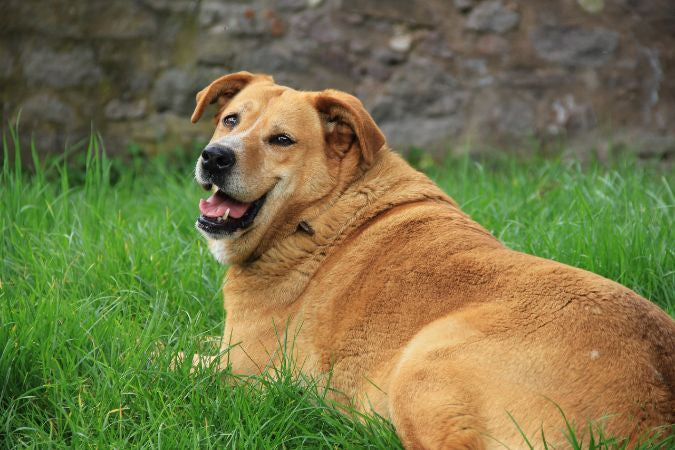Sit Down Dog Wheelchairs

What You Need to Know About Dog Obesity
The majority of dog owners are aware that obesity is dangerous for a dog’s health, but very few recognize how fine of a margin it is before a dog is deemed an unhealthy weight or just how serious the subsequent issues can be.
With PDSA estimating between one-third and 40 percent of all pet dogs are overweight or obese, here is all you need to know to help combat this epidemic and keep your dog healthy and happy.
When is a Dog Obese or Overweight
One of the main reasons so many owners don’t believe their dog is overweight when they are, is that there is very little margin for error. James Wellbeloved, expert pet nutritionists, says that just a few kilogrammes over or under this weight is considered outside the healthy threshold.
To make matters more complicated, every breed is different, and age and sex can impact what your dog’s ideal weight should be, too.
Symptoms of Obesity and Long-Term Effects
Initial symptoms of canine obesity include weight gain, excess body fat, difficulty breathing, quickness to fatigue, and an inability or unwillingness to exercise.
However, if your dog remains obese for a long period, more harmful illnesses can start to affect your dog’s health, impact quality of life, and even shorten their lifespan:
- Heart Disease
- Diabetes
- Respiratory Illness
- Higher Risk of Cancer
- High Blood Pressure
How to Spot Obesity
The most reliable way to identify if your dog is overweight or obese is to take them to the vet. However, while you should schedule at least a couple of visits a year for a general check-up, you can do the following every few weeks to keep track of your dog’s weight:
- Weigh your dog and compare their weight with an online dog breed weight chart. If they are above the average ideal weight range for their breed, your dog is probably too heavy.
- The shape of your dog's waist, when viewed from above, should naturally taper inwards. If it doesn't, your dog is overweight.
- Likewise, from the side, a dog is obese if you cannot see a clear tuck at the abdomen.
- Finally, for dogs of a healthy weight, you should be able to easily feel their ribs when pressing your fingers against them. If you have to apply effort to feel the bones, the dog has too much fat.
Returning to Normal Weight
While obesity in dogs is a common and serious problem, it is one of the health problems which, usually, is much more easily corrected.
- Speak to your vet about switching to light dog food, which contains lower carbohydrates and higher protein
- Always feed your dog at the same time every day, and never exceed recommended daily amounts.
- Put a stop to all treats and table scraps
- Increase the amount of daily exercise by going for longer or more frequent walks and encouraging play at home.
Of course, some dogs suffer other handicaps which can lead to obesity, including hypothyroidism, insulinoma, and hyperadrenocorticism. If your dog easily accrues fat and fails to lose it, despite attempting the steps above, ask your vet to investigate what else might be causing the weight gain.
Improving Your Pet's Mobility
Pets struggling with obesity put extra stress on their joints and may need extra help getting around. The Walkin' Wheels Wheelchair is perfect for relieving joint stress and point. With the support of a wheelchair your dog will be able to move with ease and get the exercise they need.












